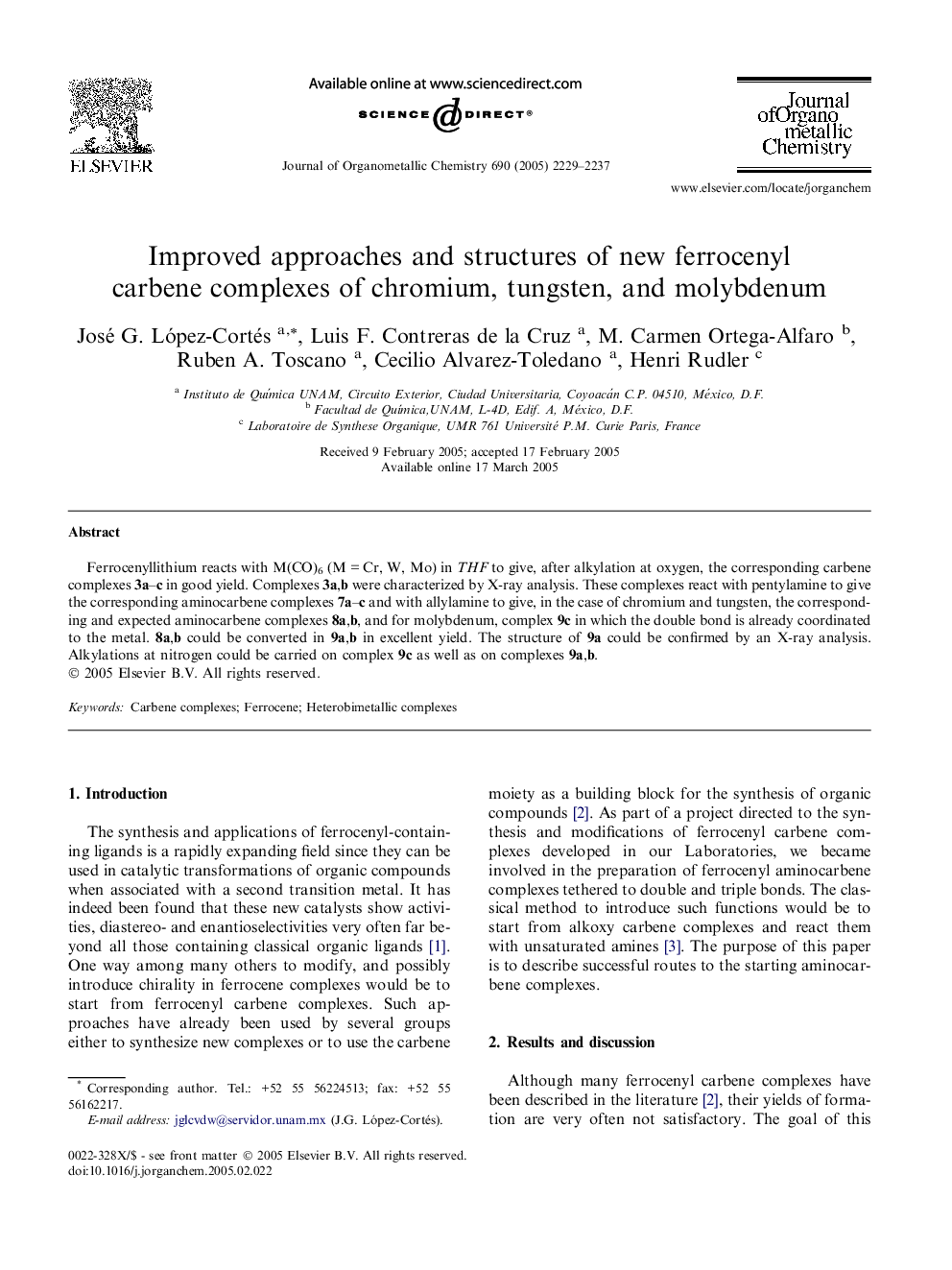| Article ID | Journal | Published Year | Pages | File Type |
|---|---|---|---|---|
| 1327920 | Journal of Organometallic Chemistry | 2005 | 9 Pages |
Ferrocenyllithium reacts with M(CO)6 (M = Cr, W, Mo) in THF to give, after alkylation at oxygen, the corresponding carbene complexes 3a–c in good yield. Complexes 3a,b were characterized by X-ray analysis. These complexes react with pentylamine to give the corresponding aminocarbene complexes 7a–c and with allylamine to give, in the case of chromium and tungsten, the corresponding and expected aminonocarbene complexes 8a,b, and for molybdenum, complex 9c in which the double bond is already coordinated to the metal. 8a,b could be converted in 9a,b in excellent yield. The structure of 9a could be confirmed by an X-ray analysis. Alkylations at nitrogen could be carried on complex 9c as well as on complexes 9a,b.
Graphical abstractFerrocenyllithium reacts with M(CO)6 (M = Cr, W, Mo) in THF to give, after alkylation at oxygen, the corresponding carbene complexes 3a–c in good yield. Complexes 3a,b were characterized by X-ray analysis. These complexes react with pentylamine to give the corresponding aminocarbene complexes 7a–c and with allylamine to give, in the case of chromium and tungsten, the corresponding and expected aminocarbene complexes 8a,b, and for molybdenum, complex 9c in which the double bond is already coordinated to the metal. 8a,b could be converted in 9a,b in excellent yield. The structure of 9a could be confirmed by an X-ray analysis. Alkylations at nitrogen could be carried on complex 9c as well as on complexes 9a,b.Figure optionsDownload full-size imageDownload as PowerPoint slide
